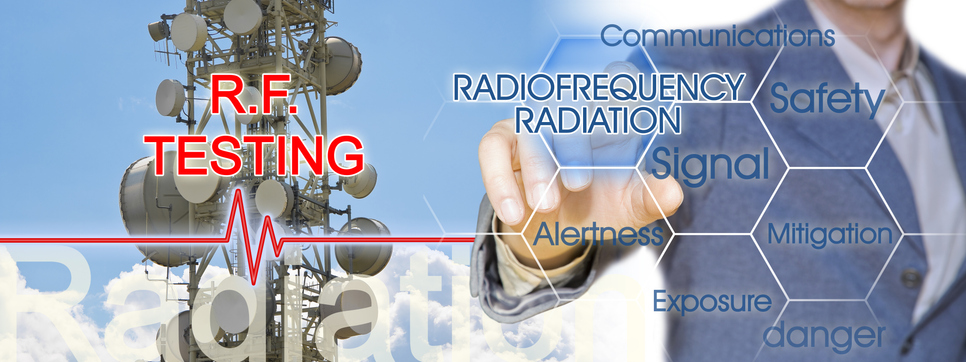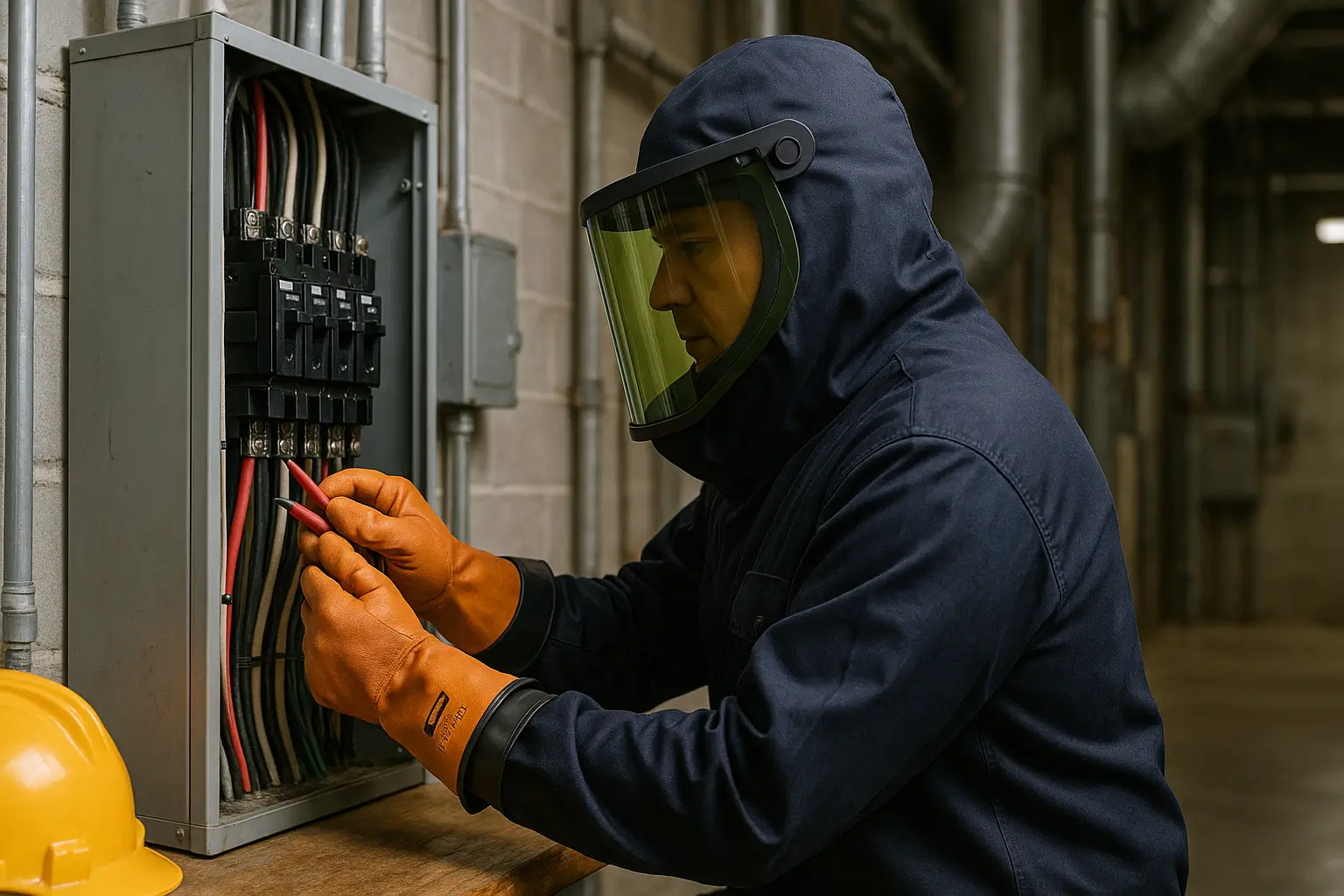We are living in an era where the use of Radiofrequency (RF) energy is common and even increasing day by day. However, RF is the type of electromagnetic radiation that is increasingly prevalent in every industry, whether it is telecommunication or healthcare centers. Whereas RF technology offers numerous benefits to us, on the other hand, it poses potential health and safety hazards.
The use of RF energy is quite common in wireless communications, radar systems, medical treatments, and industrial heating processes. The frequency range of RF radiation spans from 3 kHz to 300 GHz, and it can be beneficial yet, but at the same time, it is potentially harmful depending on the exposure level and duration. So, it is imperative to provide proper training in RF safety to workers who handle RF equipment to make sure they can understand and mitigate these risks effectively.
So, delve into this read to learn essential considerations on RF safety training!
What Is The Radiofrequency (RF) Safety Training Course?
Radiofrequency (RF) safety training is a specialized program that is designed to educate employees about the potential hazards associated with RF energy rays. These training sessions also teach the best tips to mitigate the risk effectively and efficiently.
A study published on ResearchGate also highlighted the importance of RF safety training, noting that the improper handling of RF equipment has led to numerous workplace incidents, with burns and heat-related injuries being the most common.
Increasing the awareness of RF energy is important because these radiations are present everywhere including workplaces, homes, etc. in the form of telecommunication services such as television, smartphones, laptops, and more. These are considered the most common sources of RF energy. However, workplaces have radar systems and heavy machinery that may offer more severe hazards to human health.
Due to the widespread presence of Radiofrequency (RF) energies in the workplaces, both OSHA (the Occupational Safety and Health Administration) and FCC (the Federal Communications Commission) provide guidance on safety and health concerning RF exposure.
However, the RF awareness safety training provides participants with a detailed and thought-provoking understanding of RF uses, associated safety and health hazards, and recommended best practices for working safely with RF radiation.
5 Most Common RF Hazards to Know

Knowing the most common RF hazards is vital for employers and employees both to reduce the possible risks and health hazards. Some of the RF hazards are mentioned below;
1. Burn & Thermal Injuries
One of the most common hazards associated with RF radiation is the possibility to burn and thermal injuries. When human tissue absorbs RF energy, it can cause heating similar to the way a microwave heats food. Prolonged or intense exposure to high levels of RF radiation can result in burns, particularly to the skin and eyes. Workers who are in close proximity to powerful RF sources, such as transmitters or antennas, are at higher risk. These injuries can occur without immediate pain so it is crucial to monitor and limit the exposure time of employees to RF radiation.
Prevention tip
Employers must look for safety measures, such as maintaining a safe distance from active RF sources and using protective equipment that are essential to prevent these thermal injuries.
2. Electromagnetic Interference (EMI)
RF radiation can cause electromagnetic interference (EMI) with electronic devices and medical implants. EMI occurs when RF signals disrupt the normal operation of electronic equipment that potentially lead to malfunction or failure. However, this is particularly concerning for sensitive medical devices such as pacemakers or hearing aids, which can be adversely affected by high levels of RF radiation.
Prevention tip
It is highly important to maintain RF radiation levels within safe limits and to use shielding techniques to protect vulnerable devices from interference.
3. Occupational Exposure & Long-Term Health Effects
Even at low levels chronic exposure to RF radiation has raised concerns about potential long-term health effects. With an increased risk of certain health conditions, such as cancer, reproductive issues, and neurological disorders, workers who regularly operate near RF sources, such as telecommunication towers, radar installations, or broadcasting antennas, may be at higher risk of the hazardous impact of RF radiation.
Prevention tip
Employers are responsible for implementing strict exposure limits, regular health monitoring, and focus on RF safety training programs to manage occupational RF hazards efficiently and also protect workers’ health.
4. Electrical Shocks & Indirect Effects
Indirect effects of RF radiation, such as electrical shocks, are another common hazard. RF radiation can induce currents in conductive materials, including metal objects and structures. When a person comes into contact with these objects, they may experience an electrical shock. This is particularly hazardous in environments where conductive materials are prevalent, such as construction sites or manufacturing plants. Additionally, RF radiation can cause sparks in flammable or explosive environments that may pose severe fire and explosion risks.
Prevention tip
It is significant to ensure the proper grounding, and use of non-conductive tools, and try to enforce safe work practices by providing proper training to workers who work at electrical places.
5. RF Burns from Induced Current
RF burns from induced currents are a specific type of thermal injury caused by RF radiation. When RF energy induces currents in metallic objects, these objects can become hot and cause burns upon contact. This is a particular concern for workers handling metal tools or wearing metallic accessories near RF sources. Unlike general thermal injuries from direct RF exposure, RF burns from induced currents can occur even at lower RF radiation levels, as the induced current can concentrate energy in small areas.
Prevention tip
To prevent such radiation, it is important to use an RF-insulated tool, avoid metal accessories, and try to maintain and inspect equipment on a regular basis.
Health Risks Associated With RF Exposure

Exposure to Radio Frequency (RF) radiation, particularly at high levels or over extended periods, has been associated with several health risks. Here you read some of the potential health risks associated with RF exposure:
Non-Thermal Effects
Beyond heating, there is concern about the non-thermal effects of RF radiation, which may affect biological systems in ways that are not immediately apparent. Cellular Stress Responses and Genetic Damage are the major hazards of non-thermal effects. However, RF radiation may induce genetic damage that potentially leads to mutations or changes in DNA that could increase the risk of cancer or other health problems.
Increase Risk of Cancer
The possible association between RF radiation and cancer has been the subject of extensive research. While the evidence is mixed and not conclusive, some studies have suggested an increased risk of certain types of cancer, including Brain Tumors.
RF radiation exposure, particularly from mobile phones held close to the head, has been studied in relation to brain tumors like glioma and acoustic neuroma. There are also concerns about potential links between RF radiation exposure and cancers of the salivary glands, eyes, and other organs, although the evidence remains inconclusive.
Reproductive Health
There is ongoing research into the effects of RF radiation on reproductive health. Studies have explored potential impacts on male fertility, with some suggesting that RF exposure may affect sperm quality and reproductive outcomes.
However, these concerns also extend to pregnancy, where RF radiation exposure has raised questions about potential risks to fetal development. That is why developing a proper understanding of these reproductive health concerns is critical for developing guidelines that protect vulnerable populations from unnecessary exposure.
Sleep Disturbance
RF radiation exposure has been associated with potential effects on sleep patterns and quality. Some individuals report experiencing sleep disturbances related to exposure to electromagnetic fields, including RF radiations that are emitted by devices such as mobile phones and wireless routers.
The mechanisms through which RF radiation may affect sleep are not fully understood but could involve disruptions in melatonin production or alterations in brain wave activity during sleep cycles.
Why Get RF Safety Awareness Training?
Getting RF safety training is crucial for several reasons;
To Decrease Health Issues
Without getting proper RF safety training, workers may unknowingly expose themselves to harmful levels of RF radiation that will cause acute injuries such as burns, etc. But, in case of potential long-term exposure to such harmful radiation that may cause chronic diseases such as cancer or neurological disorders.
Training programs may educate employees on such health related problems that are associated with RF radiation. Eventually, workers also learn precautionary measures to minimize exposures and help in developing a culture of the safest workplace.
To adhere With Safety Regulations
Regulatory bodies like OSHA in the United States have established guidelines and standards for safe RF radiation exposure levels. It is obligatory for employers to strictly follow these regulations to avoid legal penalties and ensure safety at the workplace.
RF safety awareness training helps organizations stay up-to-date with current regulations and implement effective safety practices. However, organizations can significantly avoid fines, legal actions, and potential shutdowns, once they demonstrate their commitment to employee welfare.
To Enhance Workplace Safety
Keep in mind that a robust culture is necessary for any organization, especially for those who are dealing with hazardous materials and environments. When you educate your employees about the possible RF hazards and try to keep them updated about the importance of following safety protocols, they are more likely to take proactive steps to protect everyone from risky situations.
However, RF safety training empowers employees by giving them most crucial knowledge and teaches them skills for identifying and mitigating the hazardous impact of Radiofrequency (RF) radiation. If you want to build a more productive environment, enroll your employees in RF awareness safety training programs.
To Improve Operational Efficiency
Having a proper understanding of RF safety principles surely helps to increase operational efficiency. No offense, trained employees are better prepared to handle RF equipment safely and effectively. This will result in reducing the probability of accidents and interruptions.
The trained employees have the capability to identify potential hazards quickly and instantly take appropriate safety measures to minimize downtime and maintain smooth operations. Additionally, knowledgeable workers are more confident in their roles, which can not only enhance their job satisfaction but also improve overall productivity.
To Prepare Workers for Emergency Situations
In the event of an RF radiation emergency, such as an accidental exposure or equipment failure, prompt and effective action is crucial. RF safety awareness training prepares employees to respond appropriately in such situations. They learn emergency procedures, first aid measures, and evacuation protocols, which can significantly reduce the severity of incidents and protect lives.
However, being prepared for emergencies ensures that the organization can handle unforeseen events with minimal impact on safety and operations.
Key Elements for RF Protection Program
Below are the key elements of a comprehensive RF protection program with a focus on the role of RF measurements:
- Exposure Evaluation: Assess to all potential exposure levels for different job tasks and areas within the workplace.
- Equipment Inventory: Must list down all RF-emitting equipment and their operational parameters.
- Hot Spot Identification: Identifying areas with high RF levels (“hot spots”) that require special attention.
- Shielding: It is crucial to install RF shielding around high-exposure areas.
- Distance: Properly design workplace layouts to increase the distance between workers and RF sources.
- Barriers: Use barriers to block RF radiation in critical areas.
- Health Monitoring: Do regular health check-ups for workers exposed to RF radiation
To Wrap Up
In summary, comprehensive RF safety training integrates multiple elements to safeguard workers from the potential hazards of RF radiation. This training is essential to maintain employee’s health, improve safety at work sites, and keep updated with regulatory adherence. However, accurate and regular RF measurements are central to this program and enable effective risk assessment and control implementation. By investing in RF safety training, organizations can create a safer work environment and protect their employees from the adverse effects of RF exposure.











